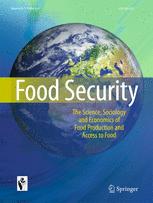 BLACKBURN – Banana xanthomonas wilt continues to spread in Tanzania despite an intensive symptomatic plant removal campaign: an impending socio-economic and ecological disaster
BLACKBURN – Banana xanthomonas wilt continues to spread in Tanzania despite an intensive symptomatic plant removal campaign: an impending socio-economic and ecological disaster
Mpoki M. Shimwela, Randy C. Ploetz, Fen D. Beed, Jeffrey B. Jones, Jason K. Blackburn, Shabani I. Mkulila, Ariena H. C. van Bruggen
Article first published online: 16 SEPT 2016 Food Security
DOI: 10.1007/s12571-016-0609-3
ABSTRACT:
Banana Xanthomonas wilt (BXW), caused by the recently introduced pathogen Xanthomonas campestris pv. musacearum (Xcm), is a limiting factor for banana production in Kagera, Tanzania. A region-wide eradication campaign was initiated in 2013. The objectives were to gain insight into the spatial and seasonal occurrences of BXW and into field management practices. In 2015, 135 smallholder farmers were interviewed about BXW and management practices, and their farms were assessed for incidence of the disease. BXW incidence per ward in 2014, obtained from extension offices, and space-time cluster analysis was performed with SaTScan. BXW clusters were detected during rainy but not during dry seasons. These results agreed with the information provided by farmers that the highest incidence of BXW occurred during rainy seasons. Farmers recalled that BXW incidence increased exponentially between 2011 and 2013 but decreased steeply after 2013, coincident with the start of the BXW eradication campaign. However, pathogen transmission continued due to inconsistent sterilization of field tools and exposure of Xcm to rain. Fields of poor farmers are at greatest risk because they borrow tools and are unable to impose some recommended management practices. After the appearance of BXW in individual farms, the number of banana bunches consumed per family per month decreased significantly from 13.1 to 6.4 with a corresponding increase in areas planted to cassava and maize. Based on these findings, we suggest refining the BXW management recommendations, in particular limiting the cutting of BXW-affected plants to dry periods and sterilizing farm tools in fire.
Read the full publication at Food Security